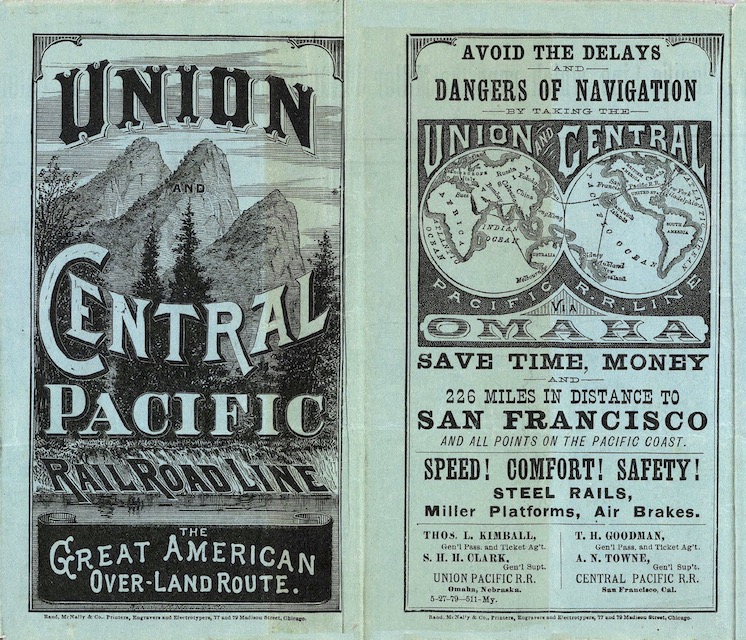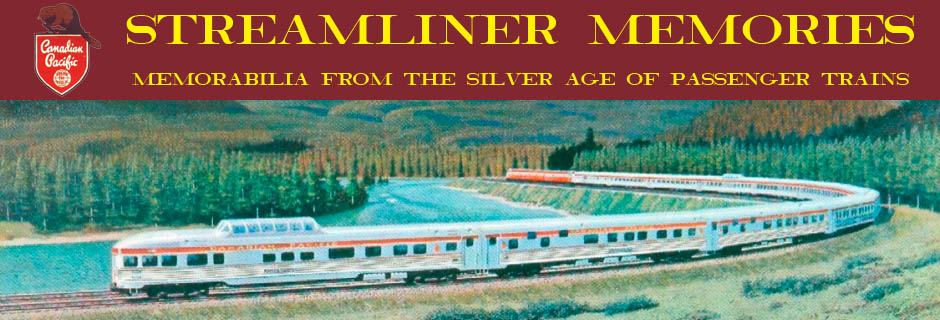This timetable is somewhat similar to the one from 1872, with a map on one side and a large timetable on the other surrounded by woodcuts of scenes along the route of the first transcontinental railway along with some text. The timetable itself shows schedules for four trains: two freight and two passenger. Neither of the passenger trains are named but on is identified as “1st and 2d class” while the other is “emigrant.” There is a column for an additional passenger train, but it only went between Oakland and Stockton.
 Click image to download a 20.7-MB PDF of this timetable, which is from the David Rumsey map collection.
Click image to download a 20.7-MB PDF of this timetable, which is from the David Rumsey map collection.
The 1872 timetable claimed that the passenger train took four days and 6 hours between Omaha and San Francisco, but the timetable actually indicated 4 days and 10 hours. This timetable does show the 1st and 2d class train taking 4 days and 6 hours for an average speed of 18.8 mph. The emigrant train took 7 days and 13-1/2 hours for an average speed of 10.5 mph.
My times depend on how the clocks were set in Omaha. This timetable says, “CPRR is run by San Francisco time, which is 1 hour and 4 minutes slower than Laramie time.” If Omaha is another hour ahead of Laramie, then the trains take an hour longer than my figures above.
The map includes several lines not mentioned on the 1872 timetable. The Southern Pacific is shown going from Sacramento to Los Angeles and Maricopa, just south of Phoenix, with a planned extension to El Paso, which for some reason is shown is being in Mexico. There is a Utah & North (which presumably means Utah and Northern) from Ogden to Taylor’s Bridge, Idaho, with a planned extension into Montana. Similarly there is a Utah & Southern with a line from Ogden to Provo with a planned extension to Frisco, Utah.
Most important from the timetable view was the Colorado Central Railroad, which had been built by Golden, Colorado resident William Loveland with the goal of making Golden the state’s preeminent city. The only connecting trains shown on the timetable are over the Colorado Central from Cheyenne to Golden, Denver, and Georgetown.
Although the timetable suggests cooperation between the two rail lines, in reality Loveland and Union Pacific vied fiercely for control of the Colorado Central Railroad. As of 1879, UP owned most of the stock but Loveland managed to keep control anyway. Ultimately, the Burlington acquired the Colorado Central and today what is left of it is part of BNSF.
